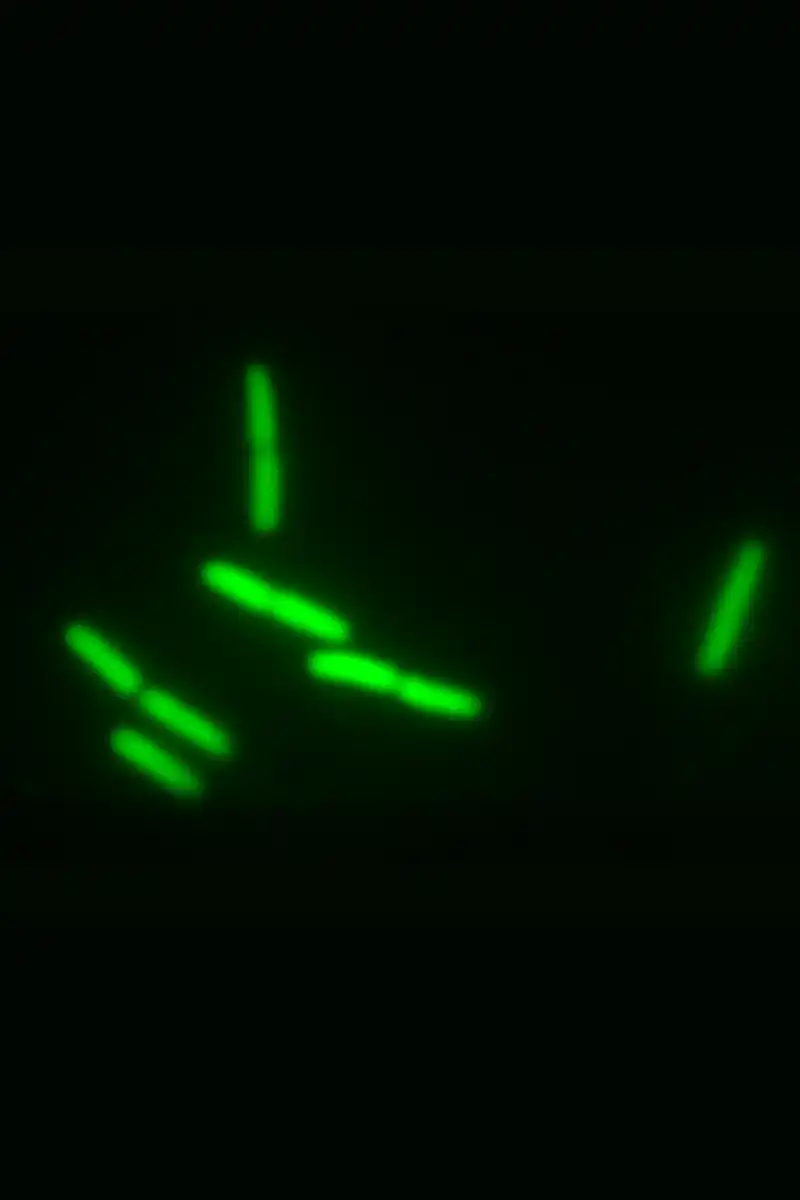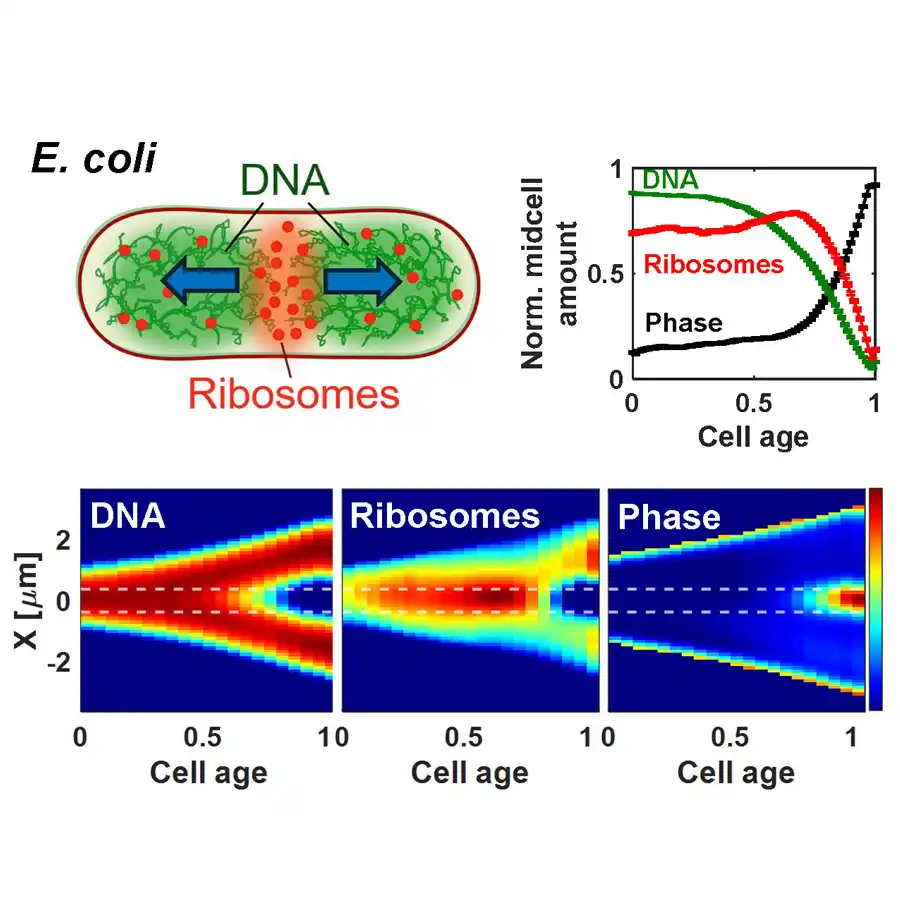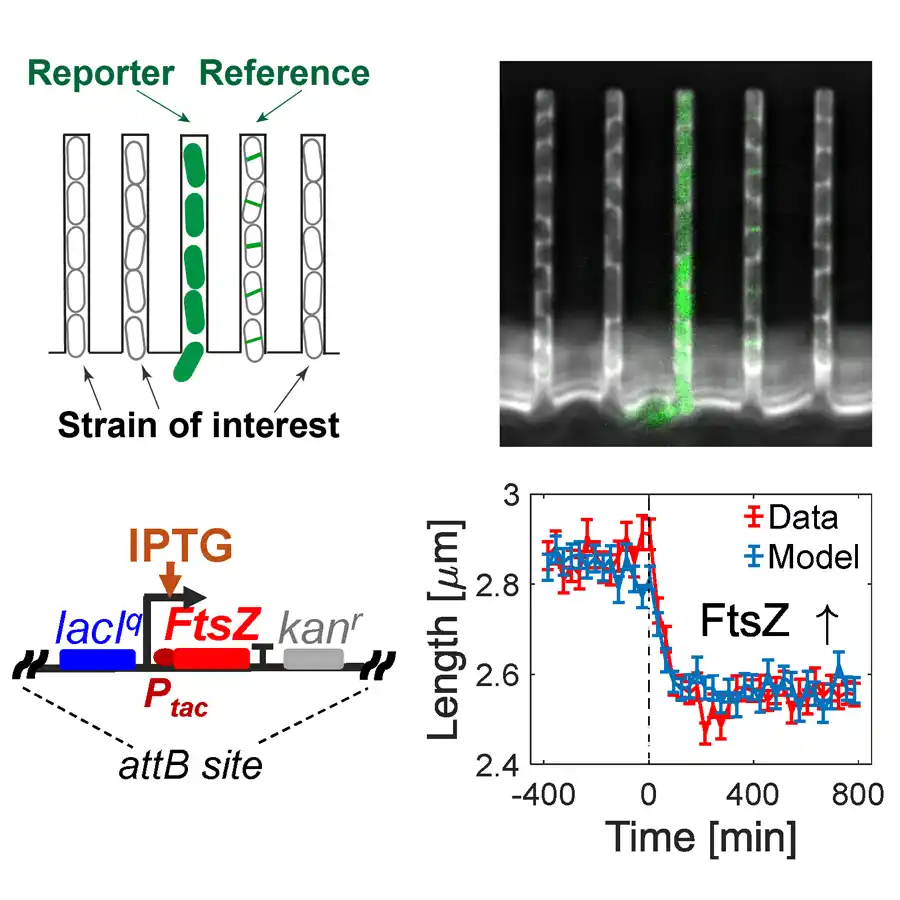

Physics at the
Cellular Level
Professor Jaan Mannik and Assistant Professor Yuqing Qiu lead biophysics efforts at UT.
The research focus of the Mannik Lab is to develop new physics and nanotechnology-based tools for studies of bacterial cells. These include new lab-on-a-chip devices that allow high throughput imaging and rapid manipulation of cell’s physical and chemical environment. Part of the microfluidic chip development is carried out at the Oak Ridge National Laboratory CNMS facility. The micro/nanoengineering effort is combined with the development of sensitive imaging and image analysis techniques that allow to track individual molecules in live cells and to resolve molecular structures at sub-diffraction resolution. In addition to the development effort, the Mannik Lab employs these novel tools to study fundamental cellular processes. The research focuses on two areas: 1) how DNA is packed, and 2) how cell division proteins self-organize in bacterial cells. Via transcriptional regulation DNA packing can be expected to control most cellular processes. Assembly of cell division apparatus is also an essential cellular process and it is target for new antibiotics. Both research areas involve new exciting physics as they deal with strongly non-equilibrium systems. These energy consuming dissipative systems show nanoscale dynamics and patterns that are yet lacking in man-made structures. The theoretical framework for these emerging properties is yet poorly understood and constitutes one of the main frontiers for contemporary physics.
The Qiu Research Group investigates non-equilibrium emergent behaviors in soft matter and biophysics with computer simulations, machine learning techniques, and theory. Their goal is to formulate theoretical frameworks that unveil the interplay of activity, force generation, and emergent architectures.
Biophysics / Soft Matter Physics Highlights
- UT’s Biophysics Group Investigates How Chromosomes Separate
- UT’s Biophysics Research Lays the Groundwork for Designing New Antibiotics
- Where Are Your Memories Stored?
Biophysics / Soft Matter Physics Media Mentions
Max Lavrentovich Explains Why Nature Creates Patterns for the Curious Kids series
The Conversation
September 19, 2022



